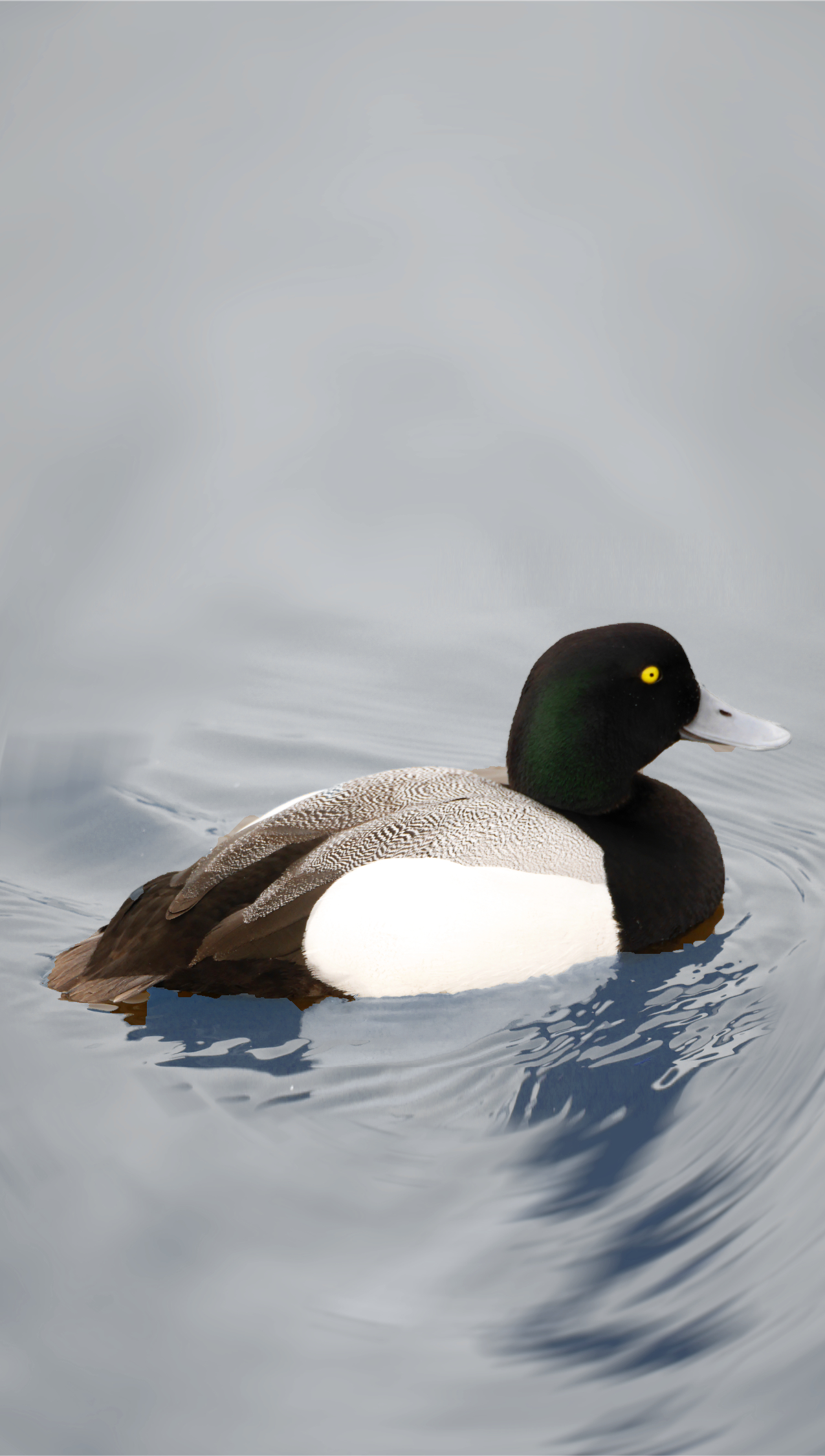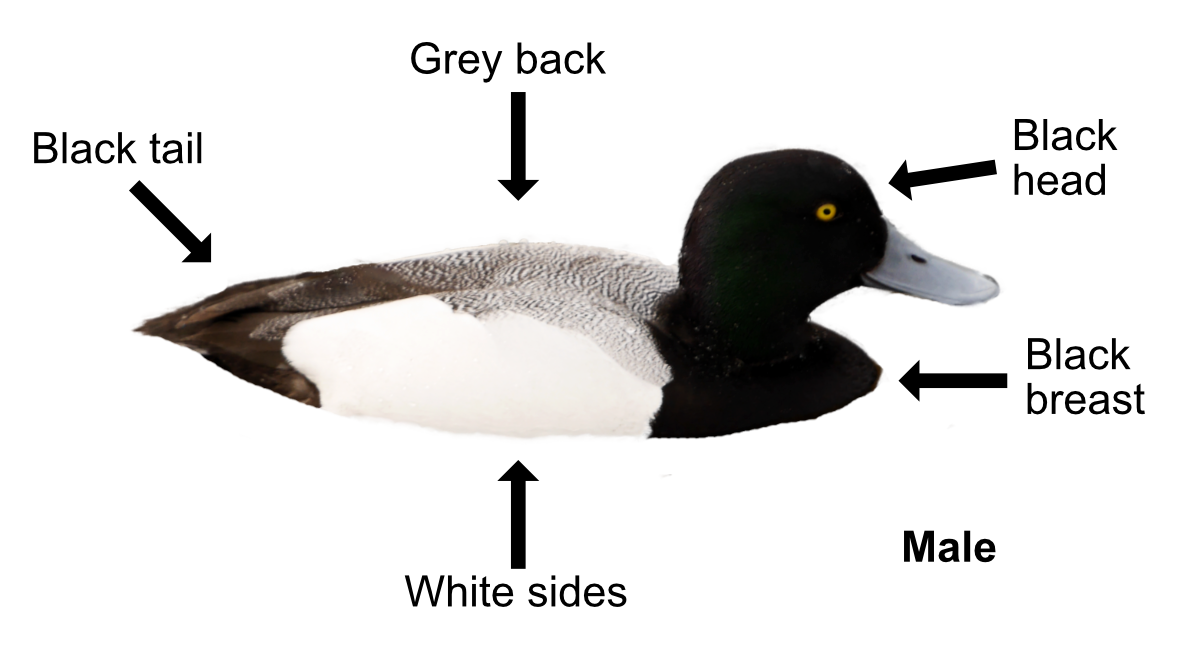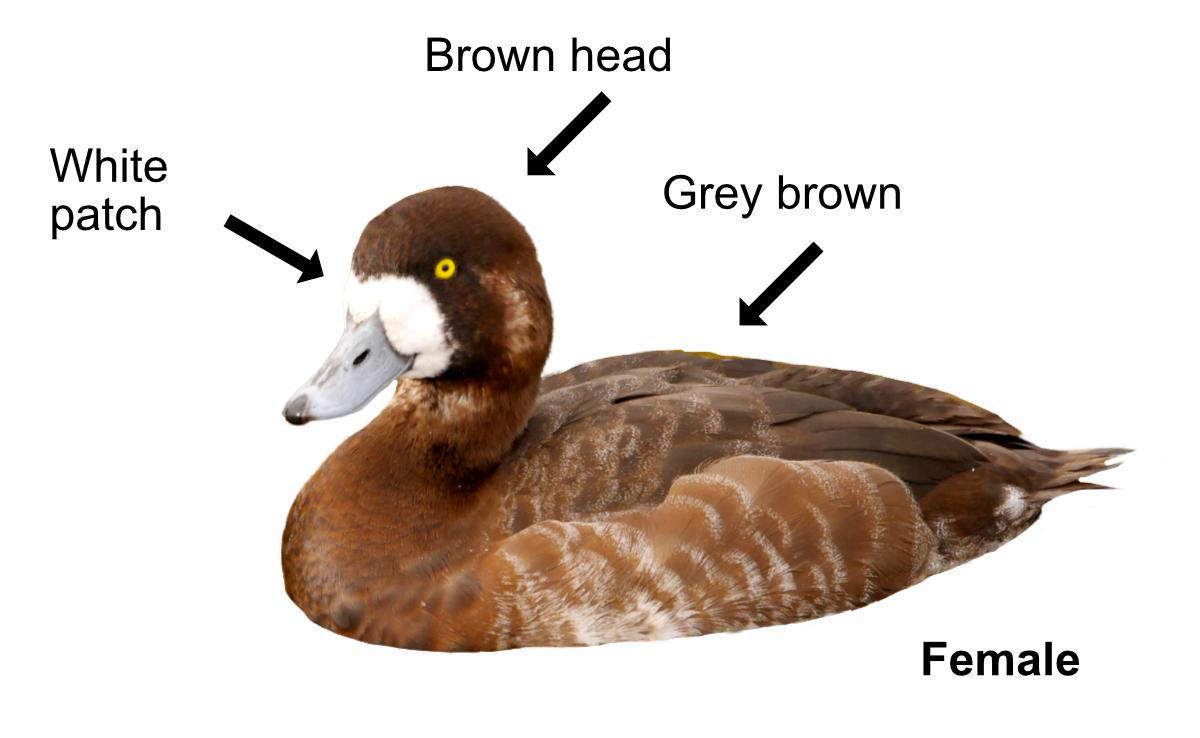
The Scaup is a diving duck that can often form large 'rafts' on the open sea that can number in the thousands. Sometimes they are called the Greater Scaup to distinguish it from the Lesser Scaup found in America. They are mainly found in winter on northern coastal waters and are rarely seen on land.

Scaups are smaller than a Mallard and have a rounded looking head. The male’s is black, and he has a black breast and tail, white sides, and a grey back - looking a bit like a Tufted Duck with a grey back. His bill is grey-blue with a tiny black tip. The female’s head is brown with a large pale patch at the base of her dark bill and her body is grey-brown. In flight, there is a broad white wing bar running the length of the wing. Scaups hardly make a sound except for a dove-like call during courtship. The female Tufted Duck in moult can often look like a female Scaup with a similar white ring round the base of its bill, though this is much smaller than an actual Scaup's.
They feed on a variety of food, including shellfish, cockles and mussels, which they pick off the seabed. Owing to the Scaup's webbed feet and weight, it can dive up to 6 metres (20 ft) and stay submerged for up to a minute, allowing it to reach food sources that are unobtainable to other diving ducks. Curiously, it mostly feeds at night.

The Scaups we see in Britain breed in Iceland and the northern coasts of the Scandinavian peninsula. They begin breeding at the age of two, but start building nests in their first year, for a bit of practice. Their courtship is complex and results in the formation of monogamous pairs. They nest close to each other in large colonies, usually on the ground, in grass or rushes, near water. The nest is a shallow depression made by the female and lined with her own down into which she lays her 6-9 olive-buff coloured eggs that hatch after 26 days. The male, like many ducks, abandons the female and leaves her to do all the incubation and chick rearing on her own. Soon after hatching, the down-covered youngsters can follow their mum in her search for food and can feed themselves. They remain with mum until they can fly 40 days later but often stay together for longer. Scaups do their moult between September and November when they are flightless for 4 weeks.
Scaups rarely nest in Britain, with less than 5 pairs ever recorded. They move south in August, with 7,000 getting here by October and staying until March. With such small numbers, sadly, the Scaup is Red Listed and also Specially Protected as the majority are concentrated in relatively few places here during winter, making them vulnerable to pollution like oil spills.
Their Latin name is 'aythya marila' where 'aythya' comes from the Ancient Greek 'aithuia' which refers to a seabird mentioned by Aristotle and 'marila' is from the Greek word for 'charcoal embers' - a reference to its grey back.